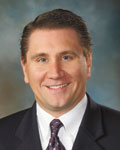October 1, 2013
A Hundred Years… A Million Changes, Part II
 By David W. Deuth, CFSP
By David W. Deuth, CFSP
President, Weerts Funeral Home
Last month began a multi-part series which merely scratched the surface of the manifold societal changes during the past one hundred years. We reviewed things like advances in manufacturing, increased life spans and, of course, advances in transportation, communication and all kinds of technology.
Technological and other such advances notwithstanding, perhaps one of the most significant societal changes in recent generations is where families actually live now: ANYWHERE. Large – and growing – numbers of today’s younger generations are not living, working or raising their own families anywhere near where they were raised. Family businesses are fewer and farther between. Jobs are often in different towns, different states – sometimes in different countries. Telecommuters can live most anywhere these days – and so they do.
Also noted was the fact that, as recently as a couple generations ago, families by and large remained in fairly close geographic proximity to their ancestors, often farming the same land or continuing a family business generation after generation. Hand in hand with this detail, we also noted that the family burial plot – often in a cemetery adjacent to the church – was a very significant factor in “keeping the family together.”
It’s interesting to note that, not all that long ago, homes were routinely built not only with living – but also dying – in mind. Before buildings were purposefully designed as funeral homes (some will surely recall the term “funeral parlor”), visitations and wakes were routinely held in the family home. My own grandparents, who built a new home in the 1930s, made certain that their front door was wide enough for a casket to pass through, and, my mom tells me, the living room was designed with some high-level windows and sufficient space for displaying the casket. [Interesting side note: when my Grandpa died in 1973, his visitation was held at the local funeral home, not in their own house…designed, as it was, for this occasion; his funeral service was held at the church. Grandma, who died nearly thirty years later: exactly the same. And just in case you’re wondering? They’re buried next to his parents.]
Given all of these societal changes over just a few generations, it’s no wonder that American preferences for end-of-life events have also changed. To be sure, some families still have family plots in their local/church cemetery – and are using them. Other may have plots that they purchased years ago and, now living elsewhere, are asking us questions like “What happens if we die in Florida (where we live now) and still want to be buried in our local cemetery in the Quad-Cities?”
As our society has become more and more mobile and as younger generations are living farther and farther away from “home,” many families are revisiting their preferences – and their options – for their funeral and burial. Perhaps this has contributed, in part, to more questions about cremation.
While it’s true that far more people in our area still choose burial over cremation, it’s also true that the number of people selecting cremation is on the increase. It’s one of the most significant factors we took into consideration in choosing to establish our own cremation center last year.
Cremation – like earth burial – is a form of final disposition of a human body following death. The resulting ashes (or cremated remains as some prefer to say) are, in my view, still the earthly essence of that person’s body – and therefore still deserve every measure of care and respect and dignity, regardless of the form. And, also like earth burial, cremation can take place before or after the ceremony that honors the one who has died. We’ll look at some of those scenarios and options next month.
It seems that many families cite one of the following two responses (and sometimes both) when asked why they are selecting cremation:
1. It’s what they (the decedent) said he/she wanted.
2. It’s simpler.
To the first point, following the decedent’s wishes is certainly important. Yet when asked if the one who has died may have expressed any other preferences about funeral/memorial service/other meaningful options for the people they cared most about, the response is usually something like this: “No, not really. He just said he wanted to be cremated.” Thus, comments such as this have everything to do with the final disposition of the body…and nothing, really, to do with guiding the people they care most about in any other preferences about a funeral or memorial service or gathering.
This is actually a good segue to their second point, that cremation is simpler. As it relates to the final disposition of the body, cremation may – or may not – be a simpler option. As noted earlier, families are now scattered all over the globe, and, for lack of a better term, the portability of transporting ashes in an urn may be deemed to be simpler than ground and/or air transportation of a person’s remains for burial.
And yet, almost unknowingly, the potential for simple can sometime becomes clouded by too many options.
And that’s what we’ll look into next month. Until then….
Remember Well.
Filed Under: Family
Trackback URL: https://www.50pluslife.com/2013/10/01/a-hundred-years-a-million-changes-part-ii/trackback/


